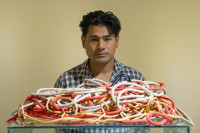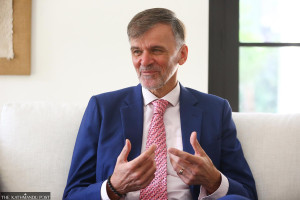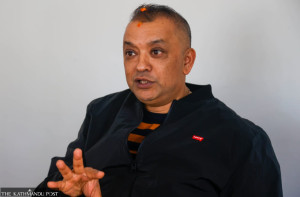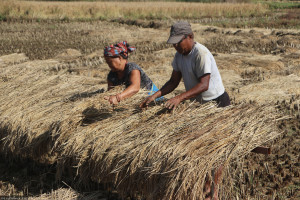Culture & Lifestyle
The man behind the lens
Photographer Kishor Kayastha discusses his humble beginnings and a shift in his approach to capturing images.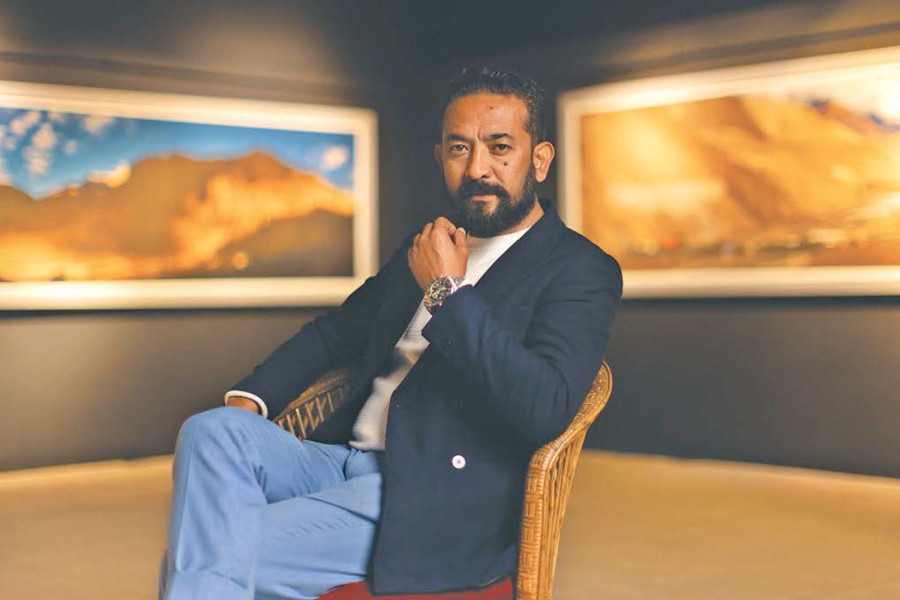
Aarya Chand
Kishor Kayastha’s journey into the world of photography is as inspiring as the images he captures. Growing up in Bhaktapur, he spent much time in his family’s photo studio, where his mother’s photography influenced him.
He recalls a moment when his mother asked him to carry sacks to the terrace with the promise of a reward. He accepted the challenge but wasn't able to complete it. Later, she asked him, “Do you know why you couldn’t do it?” She taught him an invaluable lesson: desire alone is not enough; one must possess strength and preparation. This wisdom has remained with him, serving as a guiding principle in both his artistic and spiritual journey.
Kayastha’s journey into photography was born from a curiosity and a desire to tell stories differently by balancing aesthetic elements and intentional storytelling through composition, light and emotion. Reflecting on his early experiences, he shares, “I always dreamt of doing things differently. Even during my struggling phase in 2004, I held onto my dream.”
His early years were marked by challenges, including insufficient money to buy film. “It was a hard time,” he recalls, “but within four years, my work began to flourish, bringing projects I had never imagined.”
At the start of his career, financial struggles cast a shadow over his aspirations. “There was a time when I asked for Rs100 during a blood donation programme just to buy a Konica film,” he recalls. Even back then, he yearned for more expensive products. “I came to understand how limitless human desires can be,” he reflects. Despite now being surrounded by branded equipment, the same longing lingers, prompting him to question the transient nature of material satisfaction.
A turning point in his life came during his 2019 trip to Mustang, just a year before he decided to host his exhibition ‘Mustang: Nostalgia – A Two-Decade Odyssey’. He recalls, “The journey through the rugged region was both physically demanding and emotionally draining. An unprecedented snowfall, piling up to three feet, cut off all vehicles and communication,” During this isolation, he received a phone signal and learned that his father-in-law had passed away three days earlier. Determined to return home, he set off on a risky journey back, facing harsh conditions.
The route to Kagbeni proved dangerous, particularly at Kalobhir, where deep snow made it impossible for the horses to walk. At one point, the horse he was riding stumbled and fell, leaving him on the edge of a deep pit. “It was a near-death experience,” he reflects.
Yet, despite the hardships, Mustang’s vast and untamed beauty became a theme in his work. “I want people to understand that in this vast world, we are but a speck of dust,” he says, a sentiment that inspired the expansive 20-foot panoramas featured in his exhibition ‘Mustang: Nostalgia – A Two-Decade Odyssey’ which starts on January 7 and ends on January 13.
“Mustang taught me that when you are at great heights, you can’t run. Looking down, the fear can overwhelm you, and only through slow, steady steps can you move forward,” he reflects.

For three long years, Kayastha had knocked on the doors of every major company, seeking support for his work, but he faced rejection from every side. The response was always the same: It’s recession time in Nepal.
However, fortune smiled upon him when the Gehendra Dhimal Foundation, in collaboration with the US embassy, agreed to support his project. “I’m thankful to the Embassy and Foundation,” he says, reflecting on how everything fell into place after years of struggle.
His creative process has gone through a huge transformation over the years. He recalls that in the past, his work was meticulously planned and technically sound, with a strong emphasis on artistic style, composition, and colour placement, especially in his commercial and fashion photography.
He says, “Every detail, from lighting to colours, was deliberate. It reflected my perfectionist approach to creativity.” However, his current process has become more spiritual, allowing for a “feel in the moment” vibe and intuition. He describes it as work that emerges subconsciously, flowing naturally without the pressure of rigid artistic frameworks.
This shift is evident in his recent exhibitions, which contrast sharply with his earlier ones. While past exhibitions showcased a photographer immersed in his craft's technicalities and creative mastery, his present work is freer and more grounded. He no longer forces himself into a specific style but lets the moments shape his vision.
Kayastha’s journey has also brought him full circle regarding tools, as he has worked with everything from Hasselblad cameras to simple point-and-shoot cameras. He views his current projects not as ‘amazing work’ but as ‘spiritual work’.
For Kayastha, the journey was made easier by the people who supported him. “My family has been a pillar of strength,” he says. While he doesn’t elaborate on specific influences, he credits the people around him for encouraging his creative pursuits and believing in his vision.
Kayastha offers straightforward advice to young people who feel limited by Nepal’s opportunities: “It takes time, so trust your abilities, have patience, and don’t lose yourself in the process. The journey won’t be easy, but it will be worth it.” He likens career-building to trekking in Mustang, saying, “Take slow, steady steps. That’s how you create something meaningful.”
When asked about his future plans, Kayastha shares, “I’ve never truly enjoyed life the way I should have, so now I want to live without rigid plans. Whatever comes my way, any idea that sparks my interest, I’ll pursue it.” For him, the focus is on embracing uncertainty and enjoying the freedom to explore new opportunities.




 13.12°C Kathmandu
13.12°C Kathmandu



